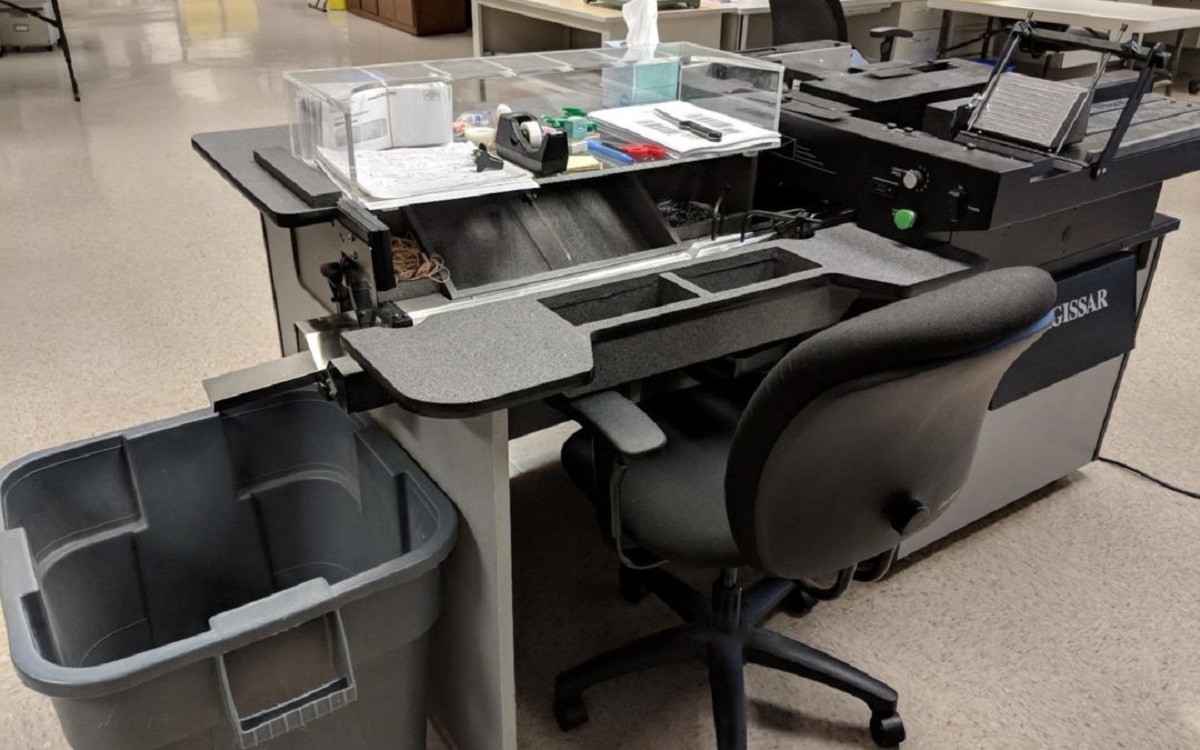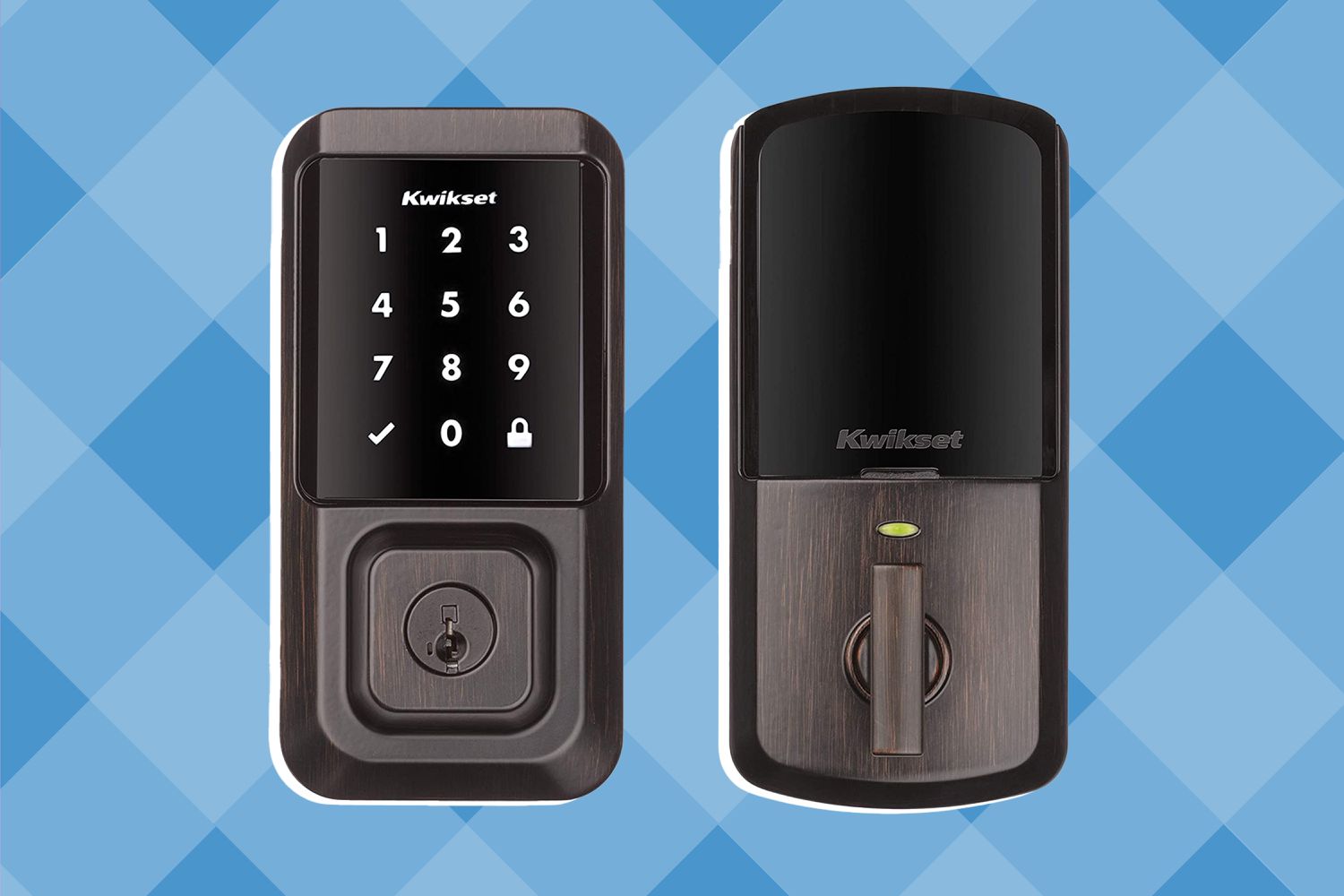What Is a Lockbox in Banking
A lockbox in banking refers to a service provided by financial institutions that helps businesses streamline their payment processing and cash management. It involves the use of a designated address where customers can send their payments, such as checks or electronic payments. These payments are then collected, processed, and deposited directly into the business’s bank account, saving time and effort.
The concept behind a lockbox service is simple. Instead of businesses receiving payments at their physical location, which can be inefficient and time-consuming, the payments are sent to a secure post office box or a specialized lockbox address. The financial institution then collects and processes these payments on behalf of the business.
Lockbox services are especially beneficial for businesses that receive a large volume of payments, such as insurance companies, utility providers, and property management companies. By outsourcing payment processing to a bank, these businesses can free up valuable resources, improve cash flow, and enhance overall efficiency.
When a payment is received at the lockbox address, the bank opens and processes the payment, often using automated systems to capture essential information such as the payment amount, date, and customer details. This information is then entered into the business’s accounting software or sent electronically for reconciliation.
The benefits of using a lockbox service in banking are numerous. First and foremost, it accelerates the collection of funds, reducing the time it takes for businesses to receive payments and improving cash flow. This ensures that businesses have access to the funds they need to cover expenses and invest in growth.
Furthermore, lockbox services reduce the risk of loss or theft of payments by eliminating the need for businesses to handle and physically transport checks. Banks provide a secure and controlled environment for payment processing, minimizing the chances of fraudulent activity or mishandling.
In addition, lockbox services offer convenience to customers by providing a centralized payment location. This helps to enhance customer satisfaction and promptness of payments, as customers can easily send their payments to the designated lockbox address, ensuring timely processing.
Overall, a lockbox service in banking is a valuable tool that enables businesses to streamline their payment processing, enhance cash flow, reduce risk, and improve customer satisfaction. By outsourcing payment collection and processing to a trusted financial institution, businesses can focus on their core operations and enjoy the benefits of a more efficient financial management system.
Overview
Lockbox services have become an essential component of modern banking, offering businesses an efficient and secure way to manage their payments. Whether it’s for processing customer payments or managing corporate cash flows, lockbox services provide a convenient solution that saves businesses time, reduces risk, and improves cash flow.
Lockbox services work by designating a specific address, either a post office box or a specialized lockbox, where customers can send their payments. These payments are collected by the bank on behalf of the business and processed promptly, ensuring timely availability of funds.
The primary goal of lockbox services is to minimize the time and effort businesses spend on payment processing. By outsourcing this task to a trusted financial institution, businesses can focus on their core operations without the hassle of manually handling and reconciling payments.
One of the key advantages of lockbox services is the ability to accelerate the collection of funds. Instead of waiting for checks to arrive at the business’s physical location and endure additional processing time, lockbox services expedite the payment collection process. This significantly improves cash flow and allows businesses to access funds promptly to meet their financial obligations or invest in growth opportunities.
Furthermore, lockbox services offer enhanced security for businesses and their customers. Banks utilize advanced technology and security measures to ensure the safe handling and processing of payments. By entrusting payment processing to professionals, businesses can minimize the risk of fraud, loss, or theft associated with the traditional handling of payments.
In addition, lockbox services provide convenience for customers. By offering a centralized payment location, businesses simplify the payment process for their customers. Customers can easily send their payments to the designated lockbox address without the need for complicated instructions, ultimately leading to timely and accurate payment processing.
Overall, lockbox services offer businesses a practical and efficient solution for payment processing and cash management. By outsourcing these tasks to a bank, businesses can improve their financial operations, reduce risk, and enhance customer satisfaction. With the ever-increasing volume of payments in the digital era, lockbox services have become an essential tool for businesses looking to optimize their financial management processes and stay ahead in today’s competitive marketplace.
Definition
A lockbox in banking is a specialized service provided by financial institutions that enables businesses to streamline their payment processing and cash management. It involves the use of a designated address, either a post office box or a specialized lockbox, where customers can send their payments, such as checks or electronic payments.
When businesses opt for a lockbox service, the bank collects, processes, and deposits these payments on behalf of the business. This eliminates the need for businesses to receive payments at their physical location and manually process them, saving valuable time and effort.
The primary function of a lockbox service is to expedite the payment collection process. Instead of waiting for checks to be physically delivered and processed, which can be time-consuming and prone to delays, businesses can leverage the lockbox service to have their payments processed swiftly. The bank opens and processes the received payments, capturing essential payment details such as the amount, date, and customer information. This information is then entered into the business’s accounting system or sent electronically for reconciliation.
Lockbox services also offer enhanced security for businesses and customers. By entrusting payment processing to a trusted financial institution, businesses can minimize the risk of loss, theft, or unauthorized handling of payments. Banks have stringent security measures in place to ensure the safe handling and processing of payments, protecting businesses and their customers from potential fraudulent activity.
Furthermore, lockbox services provide convenience for customers by offering a centralized payment location. Customers can easily send their payments to the designated lockbox address without the need for complicated instructions. This simplifies the payment process and improves customer satisfaction, as payments are promptly processed and accurately accounted for.
In summary, a lockbox in banking is a service that allows businesses to streamline their payment processing and cash management. By outsourcing payment collection and processing to a financial institution, businesses can save time, improve cash flow, enhance security, and provide a convenient payment experience for their customers.
How It Works
The process of how a lockbox works in banking involves several steps that ensure efficient and secure payment processing for businesses:
- Designated Address: The bank provides the business with a specific address, either a post office box or a specialized lockbox, where customers can send their payments. This address is unique to the business and serves as the centralized location for receiving payments.
- Payment Collection: Customers send their payments, such as checks or electronic payments, to the designated lockbox address. The bank regularly collects these payments from the lockbox and transports them to a secure processing center.
- Payment Processing: At the processing center, the bank opens and examines each payment. This may involve using automated systems to capture payment details such as the amount, date, and customer information. The bank then associates the payment with the corresponding customer account.
- Deposit and Reconciliation: Once the payments have been processed, the bank deposits the funds directly into the business’s bank account. This ensures timely availability of funds for the business. The payment details are also shared with the business, either electronically or through a secure portal, for easy reconciliation with their accounting records.
- Reporting and Notifications: Many lockbox services provide businesses with detailed reports and notifications regarding their payment activity. This helps businesses keep track of their incoming payments, monitor any discrepancies, and gain insights into their cash flow.
The entire process is managed by the bank, allowing businesses to free up valuable resources and focus on their core operations. By outsourcing payment processing to a trusted financial institution, businesses can benefit from efficient, accurate, and secure payment management.
It’s important to note that different banks may have variations in their lockbox processes, and businesses can choose from various lockbox service options based on their specific needs. Some services may offer additional features such as image capture of checks for digital recordkeeping or integration with accounting software for seamless reconciliation.
In summary, the lockbox process involves the designation of a specific address for payment collection, the bank’s collection and processing of payments, timely deposit of funds, and reporting and notifications to keep businesses informed. This streamlined process allows businesses to minimize their payment processing efforts, improve cash flow, and ensure accurate payment management and reconciliation.
Benefits of Lockbox Services
Lockbox services in banking offer numerous benefits for businesses of all sizes. Here are some key advantages:
- Accelerated Cash Flow: Lockbox services expedite the collection and processing of payments. By reducing the time it takes for businesses to receive and deposit payments, lockbox services improve cash flow. This ensures that businesses have access to funds promptly to cover expenses, invest in growth, or take advantage of business opportunities.
- Efficient Payment Processing: With lockbox services, businesses can streamline their payment processing operations. Instead of manually handling and reconciling payments, which can be time-consuming and prone to human error, the bank handles these tasks on behalf of the business. This allows businesses to focus on their core activities and allocate resources more effectively.
- Enhanced Security: Lockbox services provide an added layer of security for businesses and their customers. By entrusting payment processing to a trusted financial institution, businesses can minimize the risk of loss, theft, or unauthorized handling of payments. Banks have robust security measures in place to ensure the safe and confidential handling of payments, protecting both businesses and their customers.
- Convenience for Customers: Lockbox services offer a centralized payment location for customers. This simplifies the payment process, as customers can easily send their payments to the designated lockbox address. This convenience encourages timely payments, improves customer satisfaction, and reduces the chances of payment delays.
- Improved Accuracy and Reconciliation: Lockbox services utilize automated systems to capture essential payment details accurately. This reduces the chances of errors or discrepancies in payment processing. Additionally, banks often provide businesses with detailed reports and electronic data for easy reconciliation with their accounting systems, ensuring accurate financial records.
- Scalability: Lockbox services are designed to handle high volumes of payments, making them suitable for businesses of all sizes. Whether a business receives a few payments a day or thousands, lockbox services can efficiently process and manage the payments, enabling scalability as the business grows.
Overall, the benefits of lockbox services include improved cash flow, efficient payment processing, enhanced security, convenience for customers, accurate accounting and reconciliation, and scalability. By outsourcing payment processing to a trusted financial institution, businesses can optimize their financial operations, improve customer satisfaction, and focus on their core competencies.
Types of Lockbox Services
Lockbox services in banking offer flexibility to businesses by providing various types of lockbox solutions to meet their specific needs. Here are the most common types of lockbox services:
- Retail Lockbox: This type of lockbox service is designed for businesses that receive a large volume of consumer payments, such as utility companies or insurance providers. Retail lockbox services typically involve the processing of payments received via traditional methods, such as checks or money orders. The bank collects, processes, and deposits these payments on behalf of the business, accelerating collections, and improving cash flow.
- Wholesale Lockbox: Wholesale lockbox services cater to businesses that primarily receive payments from other businesses, such as commercial contractors or suppliers. This type of lockbox service focuses on the processing of high-value payments, typically received through checks or electronic transfers. Wholesale lockbox services often involve advanced payment processing technology and enhanced reporting capabilities to meet the unique requirements of B2B transactions.
- Remote Deposit Capture (RDC): Remote Deposit Capture is a popular type of lockbox service that allows businesses to process payments electronically without physically sending them to a lockbox address. With RDC, businesses can use a desktop scanner or mobile device to capture check images and transmit them electronically to the bank for processing. RDC offers convenience, speed, and accessibility, making it suitable for businesses with a decentralized payment processing setup or remote locations.
- Electronic Lockbox: Electronic lockbox services leverage electronic payment methods, such as Automated Clearing House (ACH) transactions or online payment gateways, for businesses that receive digital payments. Instead of physical checks, customers can make electronic payments directly to the business’s designated lockbox account. The bank receives and processes these electronic payments, providing businesses with quick access to funds and seamless reconciliation.
- Consolidated Lockbox: Consolidated lockbox services are designed for businesses with multiple geographical locations or who receive payments in various currencies. With this type of lockbox service, the bank consolidates payments from different locations into a single processing center. This simplifies payment management and improves efficiency, as businesses can have a centralized view of their payments and streamline reconciliation processes.
It’s important for businesses to consider their payment collection needs, volume, and preferred payment methods when choosing the type of lockbox service. Banks may offer additional customization options or specialized lockbox services based on the specific requirements of businesses across various industries.
By selecting the appropriate type of lockbox service, businesses can optimize payment processing, improve cash flow, enhance customer satisfaction, and streamline their overall financial operations.
Choosing the Right Lockbox Service Provider
When selecting a lockbox service provider in banking, businesses should consider several factors to ensure they choose the right partner that aligns with their specific needs. Here are some key considerations when choosing a lockbox service provider:
- Experience and Expertise: Look for a lockbox service provider with ample experience in handling payment processing for businesses similar to yours. The provider should have a deep understanding of your industry’s unique payment requirements and possess the necessary technology, resources, and expertise to handle your payment volumes efficiently.
- Technology and Security: Assess the provider’s technological capabilities and security measures. Consider whether they offer advanced automation technologies to streamline payment processing and reporting. Additionally, inquire about their security protocols, such as encryption, data protection, and fraud prevention measures. Ensure that the provider has robust safeguards in place to protect sensitive customer information and mitigate potential risks.
- Service Level Agreements (SLAs): Review the provider’s SLAs to understand the level of service they guarantee, especially in terms of payment processing timeframes, accuracy, and reliability. Ensure that the provider adheres to strict SLAs to maintain consistent and efficient payment processing for your business.
- Scalability and Flexibility: Consider the provider’s ability to scale with your business. Assess whether they can handle your current payment volumes and potential future growth. Additionally, evaluate their flexibility in accommodating different payment types, including checks, electronic transfers, or online payment gateways, based on your customers’ preferences.
- Reporting and Reconciliation: Inquire about the provider’s reporting capabilities and the availability of detailed transaction reports. Assess whether the reports meet your business’s needs for financial and accounting reconciliation. Look for features such as customizable reporting, real-time access to payment data, and easy integration with your existing accounting software.
- Customer Support: Evaluate the level of customer support offered by the lockbox service provider. Ensure they provide responsive and accessible customer support to address any questions, concerns, or issues that may arise during the payment processing journey. A reliable support system is crucial to maintain smooth operations and resolve any payment-related challenges promptly.
- Cost and Pricing Structure: Understand the provider’s pricing structure and fee breakdown. Consider whether the costs align with your budget and the value received. Compare pricing options from multiple providers to ensure you’re getting competitive rates without compromising on service quality or security.
By carefully considering these factors and conducting thorough due diligence, businesses can choose a lockbox service provider that offers reliable, secure, and efficient payment processing. The right provider will enable businesses to optimize their cash flow, improve customer satisfaction, and enhance overall financial management.
Conclusion
Lockbox services in banking provide businesses with a convenient and efficient way to streamline their payment processing and cash management. By outsourcing payment collection and processing to a trusted financial institution, businesses can benefit from accelerated cash flow, improved accuracy, enhanced security, and increased customer convenience.
The lockbox process involves the designation of a specific address for payment collection, the bank’s collection and processing of payments, timely deposit of funds, and reporting and notifications to keep businesses informed. With various types of lockbox services available, businesses can choose a solution that aligns with their unique needs, whether it’s a retail lockbox, wholesale lockbox, remote deposit capture, electronic lockbox, or consolidated lockbox.
When selecting a lockbox service provider, it’s essential to consider factors such as experience, technology, security measures, service level agreements, scalability, reporting capabilities, customer support, and pricing. By conducting thorough research and due diligence, businesses can choose a provider that offers reliable services, meets their specific requirements, and delivers value for their investment.
In today’s digital era, where businesses face increasing payment volumes and the need for efficient financial management, lockbox services have become an invaluable tool. They enable businesses to optimize their payment processing operations, reduce manual effort, enhance cash flow, and focus on core business activities.
In conclusion, lockbox services revolutionize payment processing for businesses by improving efficiency, security, and customer satisfaction. By leveraging the expertise and technology of a trusted financial institution, businesses can transform their payment management processes, streamline cash flow, and drive overall financial success.

























